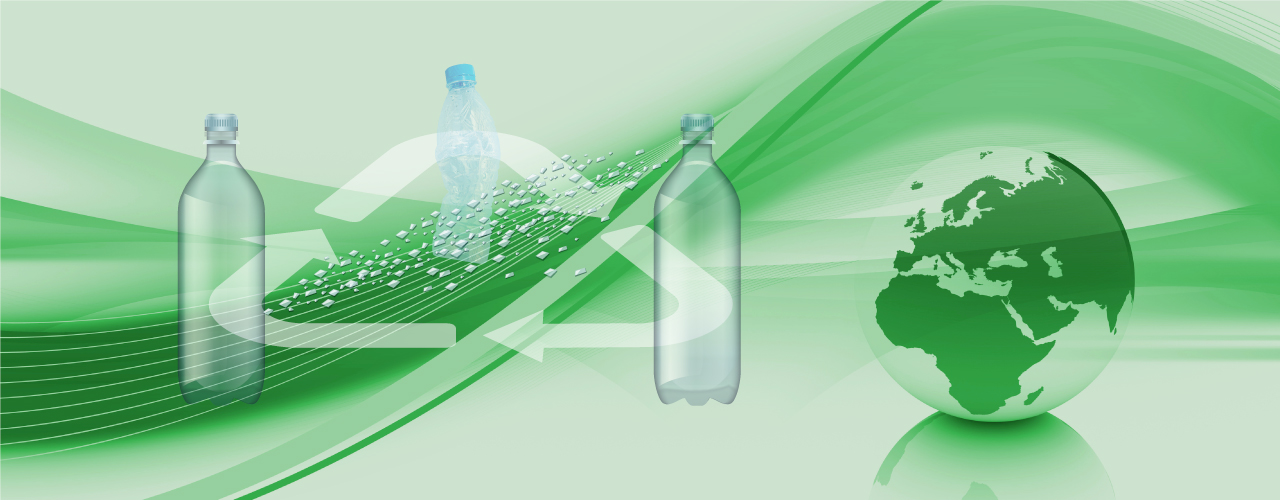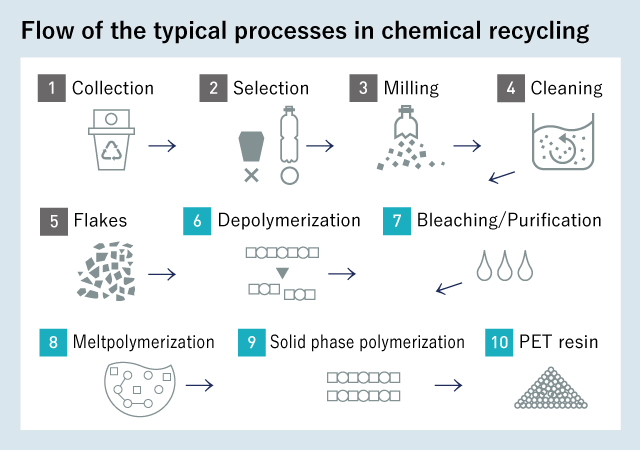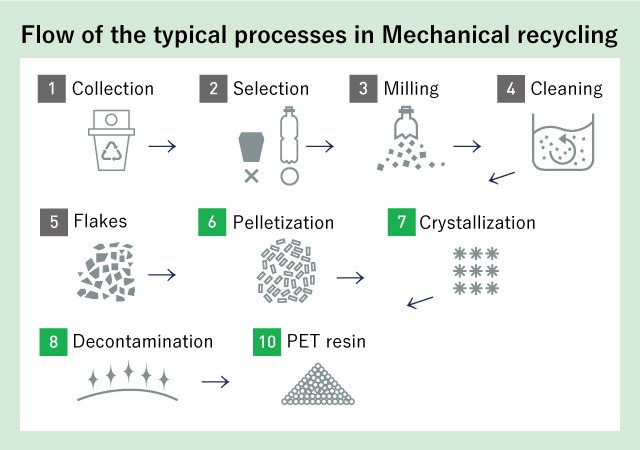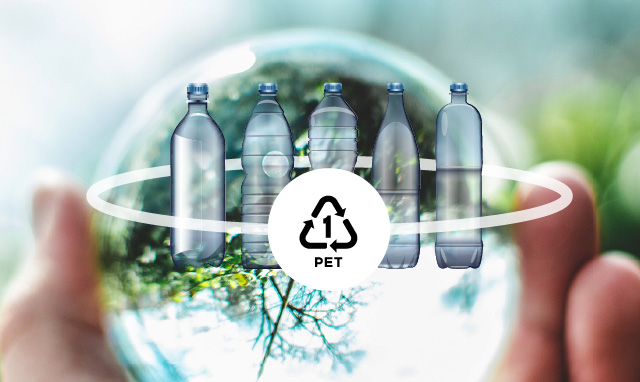Articles on PET resin
Recycling plastic bottles: Bottle-to-bottle

Plastic bottles were developed in the US during the latter half of the 1960s before it was introduced to Japan in the latter half of 1970s. Since this time, it has become an indispensable product in our daily lives. There is an increased awareness of the need for a zero-waste approach in the recycling of used plastic bottles from the viewpoint of utilizing the limited resources, collection of resources, and reduction of waste. For this reason, there is an urgent need for reinforcement of the system for processing plastic bottles. Tsukasa Petco is one of the companies working to create a new world through recycling.
In this article, we will explain the method of product making through the “bottle-to-bottle” system, where the plastic bottles used for food products are recycled to be used again for foods and beverages.
(*Plastic bottles used for foods and beverages are returned to their raw materials and recycled to make plastic bottles for food use. This does not include reusing the same bottles.)
Chemical recycling and mechanical recycling

There are two methods of “bottle-to-bottle” recycling used in Japan, which are chemical recycling and mechanical recycling. Both methods involve identical procedures to the traditional material recycling up to the step of producing recycling flakes from the used plastic bottles. After this process, two different recycling methods are adopted.
Chemical recycling
Used plastic bottles are sorted, milled, and cleaned before foreign matter is removed. Following this, depolymerization is performed to degrade the plastic to the raw materials of the PET resin, then the resulting material is purified and polymerized to create new PET resin. This process is characterized by the removal of foreign matter and foreign materials during depolymerization/repolymerization to obtain high-quality PET resin equivalent to virgin resins.

Mechanical recycling
Used plastic bottles are sorted, milled, and cleaned before foreign matter is removed, then bottles are decontaminated by exposure to high temperature and diffusing the contaminants remaining in the resin. Mechanical recycling is said to involve lower manufacturing costs and environmental burden than chemical recycling as it does not require large-scale degradation and polymerization facilities.

“Specified plastic bottles”, the decisive factor in bottle-to-bottle recycling
Plastic bottles are made of highly durable materials that are easily recycled.
“Bottle-to-bottle” recycling into plastic bottles enables the recovery of resources,
and this will be a major contributing factor to achieving a recycling-oriented society.
In order for plastic bottles to be recycled and recreated as high-quality new recycled products, it is necessary to eliminate the residues and odor of the contents adhered to the bottles. For this reason, contents that can be easily cleaned with water are selected for “specified plastic bottles” under the Containers and Packaging Recycling Law. Plastic bottles other than those applicable to “specified plastic bottles” are recycled separately as “other plastic containers and packages”.
The Japanese government has specified plastic bottles filled with contents that do not hinder the recycling of plastic bottles alone as specified labelled products (plastic bottles) and have mandated the use of “identification labels for plastic bottles” as a part of the effort to promote the realization of recycling-oriented society.

Types of specified plastic bottles
Specified plastic bottles include containers for beverages, soy sauce, and other products.
| Beverages | Soft drink | Tea-related beverage, carbonated drink, sports drink, mineral water, coffee, coffee-related beverage, etc. |
|---|---|---|
| Juice | Fruit juice, vegetable juice, etc. | |
| Alcohol | Shochu spirit, mirin (sweetened sake) containing alcohol, western liquor, sake liquor, etc. | |
| Milk, milk beverage, etc. | Drinkable type fermented milk, lactobacillus beverage, milk beverage, etc. | |
| Specified seasoning (increased number of items) |
Soy sauce | |
| Processed soy sauce products | (noodle sauce, etc.) | |
| Fermented alcohol seasoning | ||
| Mirin-style seasoning | ||
| Vinegar | ||
| Seasoned vinegar | ||
| Dressing type seasoning | Oil-free dressing, etc. |
Reference/source: “The Council for PET Bottle Recycling”
Due to the difficulty in removing stains after use, plastic bottles used for dressing that contains edible fat or oil,
sauce with high spice content, and barbeque sauce are not classified as “specified plastic bottles” but as “other plastic containers and packages” along with other general plastic bottles for non-food use.
- Summary
- More than 40 years have passed since plastic bottles were introduced to Japan and they have come to be used in large quantities as beverage containers. More than 40 years have passed since plastic bottles were introduced to Japan and they have come to be used in large quantities as beverage containers. A major beverage manufacture has announced the plan to use “bottle-to-bottle” in 50% to 90% of their products by 2030. However, there are still many issues regarding waste reduction, and as a company engaged in the handling of resins, Tsukasa Petco aims to make any efforts possible to address these issues.
- Author of this article
- Eishi MoritaCEO of TSUKASA PETCO CORPORATION, contributing to the global environment and customers through PET resin and chemicals
